100th Anniversary Great Nave Tour at the Cathedral of St. John the Divine
Celebrate the 1925 construction of the stunning nave inside the world's largest Gothic cathedral!


The Plaza Hotel is one of the oldest and most famous buildings in the city, now over a hundred years old. For decades, it was the meeting place of Manhattan’s wealthiest socialites, and still remains, in some part, today. Most interesting to us though in its 100 year history are some of its most eye-catching secrets. Here’s what we dug up:

The ‘Plaza’ in ‘Plaza Hotel’ stands for the Grand Army Plaza, right on the southeasternmost corner of Central Park. For the small square that it is, it is the site of a few interesting memorials. Most recognizable is the golden statue of William Tecumseh Sherman, the harsh, unforgiving Civil War general whose methodical destruction of the land his army passed over helped win the North a decisive victory. His horse is led by the personification of Victory. The statue is gilded in real 23 karat gold.
Also at the Plaza is the Pulitzer Fountain, contributed by publisher Joseph Pulitzer for the designs laid out by sculptor Karl Bitter, who proposed a Beaux-Arts style square in 1898. Atop the fountain is Pomona, a Roman Goddess of fruitful abundance. The site was named the Grand Army Plaza after the Grand Army of the Potomac in the Civil War.
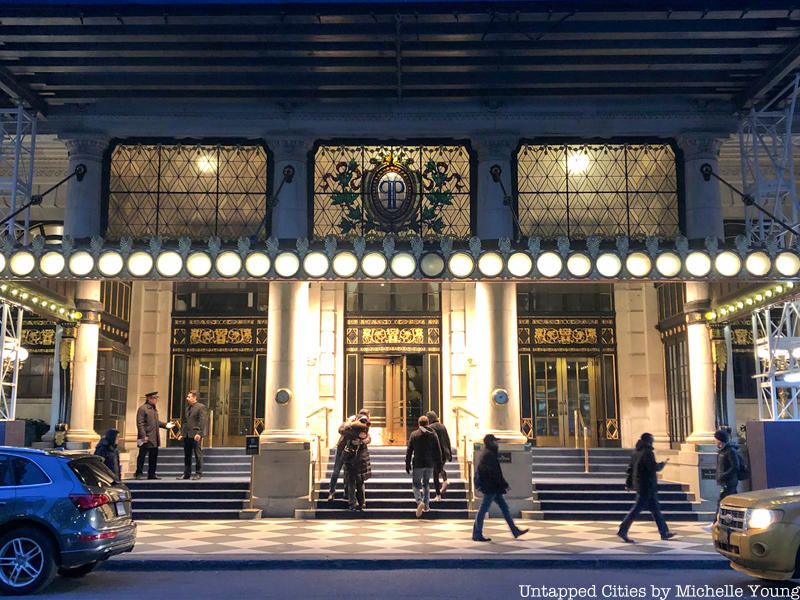
On the Hotel’s opening day on October 1st, 1907, the first motorized cabs in the city pulled up in front of the lobby, waiting for customers. They were owned by American businessman Harry Allen, who had only a year before sworn to replace all horse-drawn cabs with his own automobile cabs. The horse-drawn cabs waited at the other end of the street. Though the Plaza Hotel is still one of the only places you can hail either a taxi cab or a horse-drawn carriage, the equestrian variety would never again be the city’s main mode of transport.
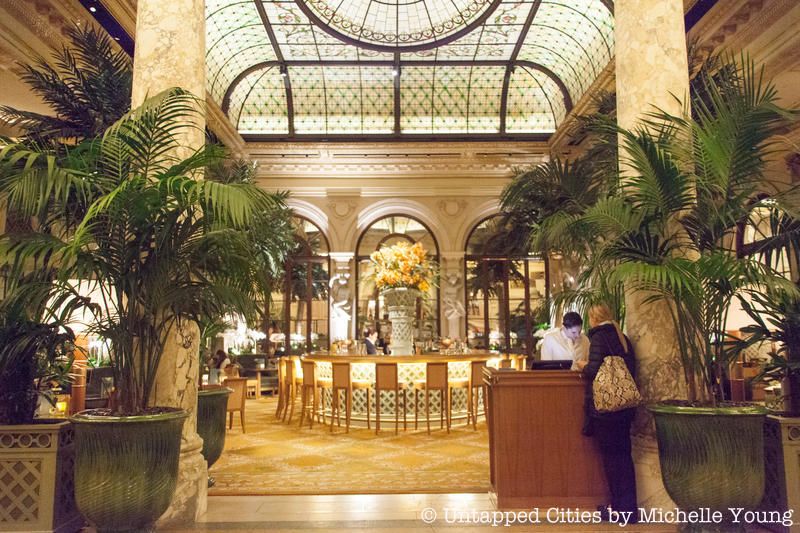
One of the most famous high society balls of 1960s New York was thrown in the Plaza Hotel’s Grand Ballroom by author Truman Capote, then at the height of his fame and success following the release of his novel, In Cold Blood. Capote, having long dreamed of throwing a lavish ball for his rich and famous friends, in his words, chose a guest of honor, publisher of The Washington Post, Katherine Graham, and spent $16,000 (worth about $120,000 today) on a single night.
The ball, with its black and white dress code, scarlet tablecloths, and midnight dinner of scrambled eggs, sausage, chicken hash, and meatballs, went down in history as one of the most lavish balls ever thrown in New York. Following Capote’s Black and White Ball, attended by the likes of Frank Sinatra and Mia Farrow, masquerade balls grew quickly in popularity, to the point where wealthy people in ballgowns and masks has almost reached literary cliché.
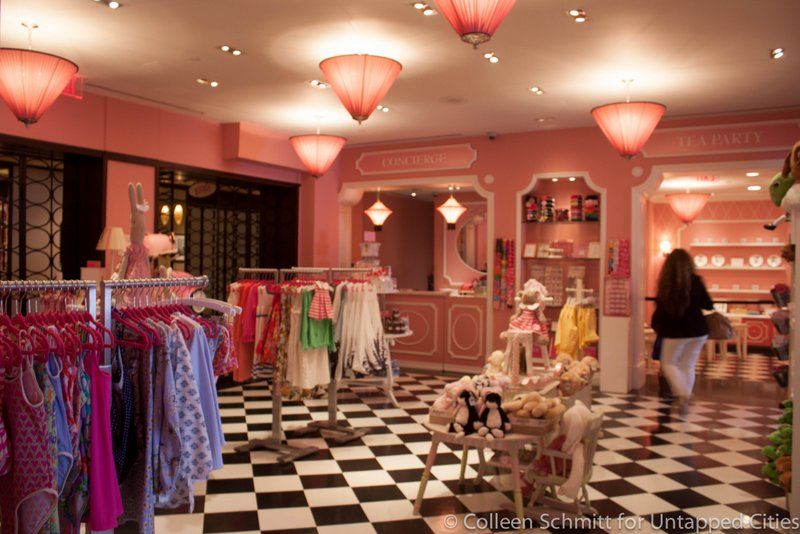
Few may remember Princess Elisabeth Vilma Lwoff-Parlaghy of Russia, but her infamous stay at the Plaza Hotel in 1908 raises eyebrows even today. Well-regarded as the epitome of spoiled royalty, Princess Elisabeth was turned away from the Waldorf Astoria when she attempted to bring in her 12 servants, dogs, cats, owl, guinea pig, ibis, bear, and alligators. She turned then to the Plaza, who welcomed her and even offered extra space for her pets. Just like that, the Plaza became one of the first pet-friendly hotels in the city. One of her pets was a lion cub that she purchased from the Ringling Bros. shortly after moving into the Plaza. The lion’s name was Goldfleck.
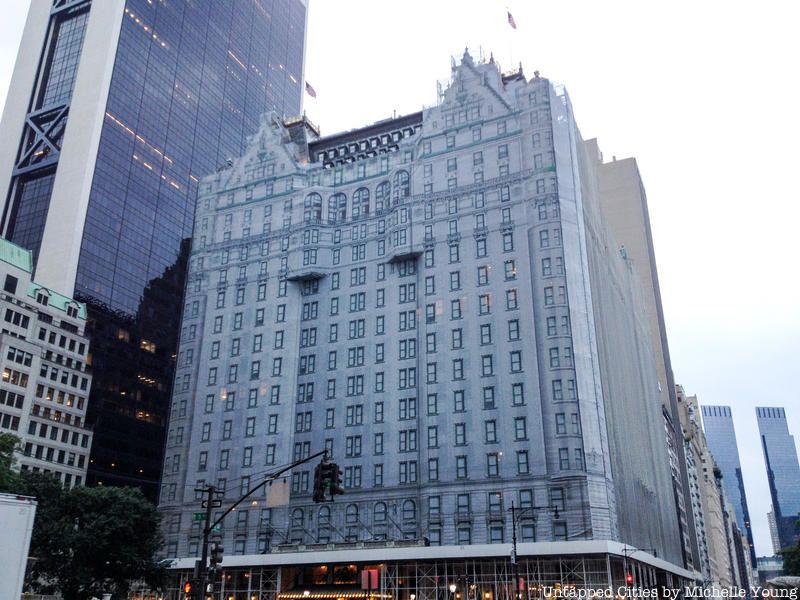
The Plaza under renovation in 2013
The Plaza Hotel has passed through a number of owners, most notably Conrad Hilton, who in 1943 bought the hotel for $7.4 million (now worth $101 million) and spent $6.0 million (now worth $81.8 million) renovating. Donald Trump bought the property in 1988 for a $407.5 million (now worth a staggering $812 million), saying to New York Magazine: “I haven’t purchased a building, I have purchased a masterpiece – the Mona Lisa. For the first time in my life, I have knowingly made a deal that was not economic – for I can never justify the price I paid, no matter how successful the Plaza becomes.” When Trump divorced his wife Ivana, then-president of the Plaza Hotel, he sold it for a comparatively meager $500 million.
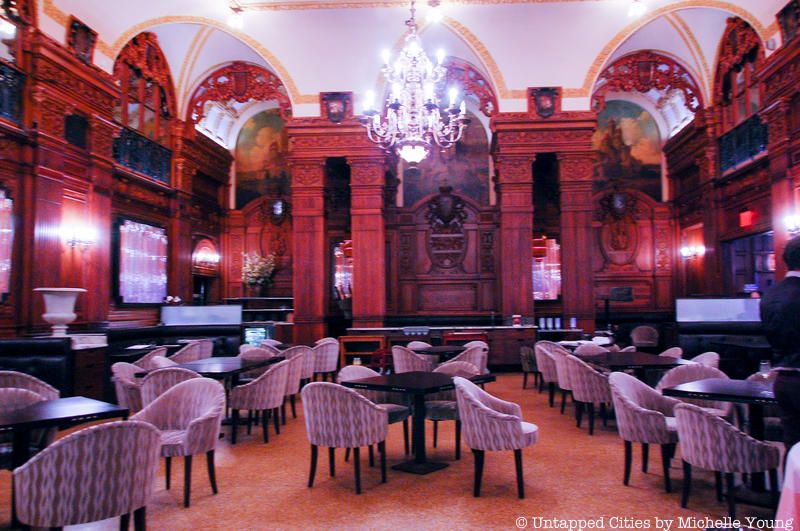
The Oak Room opened along with the hotel in 1907 as the Men’s Bar and closed during Prohibition. It gained its current name after reopening but still maintained mens-only lunches during the week days. A protest led by Betty Friedan and the members of the National Organization for Woman led to a policy change in 1969. It closed in 2011 after a dispute between the hotel and the bar’s tenants, who would often throw loud and raucous parties and other events.
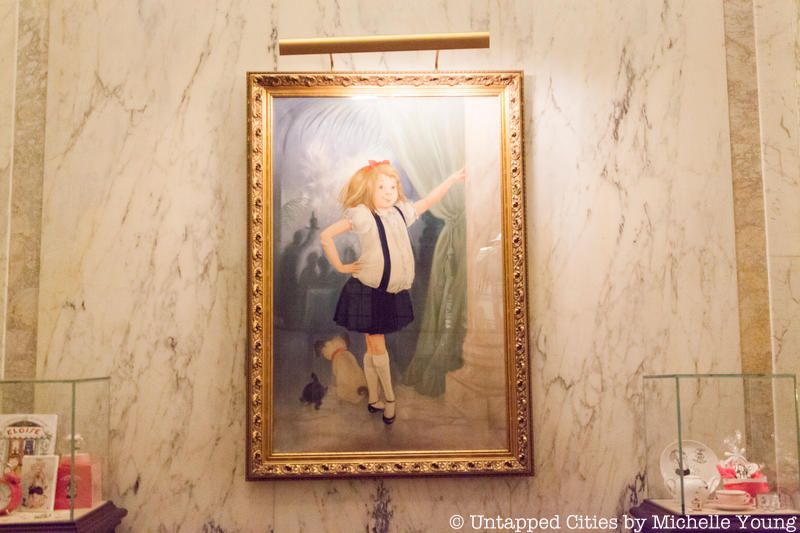
Kay Thompson’s Eloise books, the first of which was published in 1955, feature the Plaza’s most famous resident, the girl who lives in a “room on the tippy-top floor” of the Plaza with her Nanny, her pug dog Weenie, and her turtle Skipperdee. Eloise has since spawned four sequels, dozens of toys, a film, and countless merchandising products. The Plaza Hotel, in her honor, now offers a children’s ‘Eloise’ menu, an Eloise store at the bottom of the hotel, and an Eloise Suite, styled the way it’s described in the books and open for reservation.
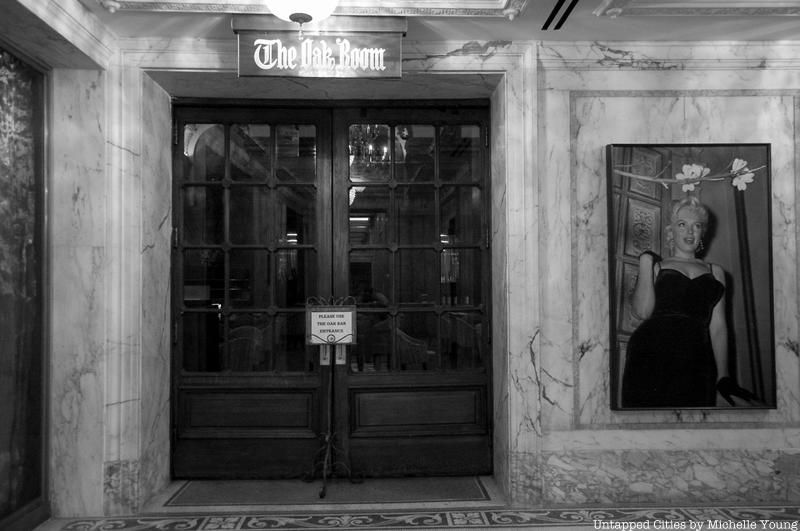
A month into the Plaza Hotel’s opening, it saw its first major scandal. Mrs. Patrick Campbell, a British stage actress and personal friend of George Bernard Shaw (who later wrote Pygmalion for her), was staying at the hotel while she performed in a production in Hedda Gabler. On her first night, she went down to the Palm Court for dinner, lit a cigarette, and smoked it. It was an age where such a thing was only ever done by men. The story goes that seconds later, the headwaiter approached her and demanded she put it out, to which she was probably the first person in history to shrug and say “I understand this is a free country. I shall do nothing to change it.” The restaurant set up privacy screens around her as she finished smoking. Her lit cigarette caused a media firestorm that debated the “evils of smoking” and eventually led in part to the banning of smoking on all New York City subway stations.
Some other, less fabulous scandals included a claim from socialite Susan Rosenstiel, the wife of distiller Lewis Rosenstiel, that she had once seen then-director of the Bureau of Investigation J. Edgar Hoover attending parties at the hotel in a dress, heels, makeup, and a wig. This was later proved highly unlikely to be true (no surprise there), but was regarded as valid for a while because it was published in a tell-all book about Hoover, “Official and Confidential: The Secret Life of J. Edgar Hoover,” published in 1993. In more modern times, the Plaza Hotel was the place of the infamous press conference held by Woody Allen in which he confessed his love for his adopted stepdaughter, Soon Yi Previn, and the scene of actor Charlie Sheen‘s arrest following his public meltdown and firing from the show Two and a Half Men.
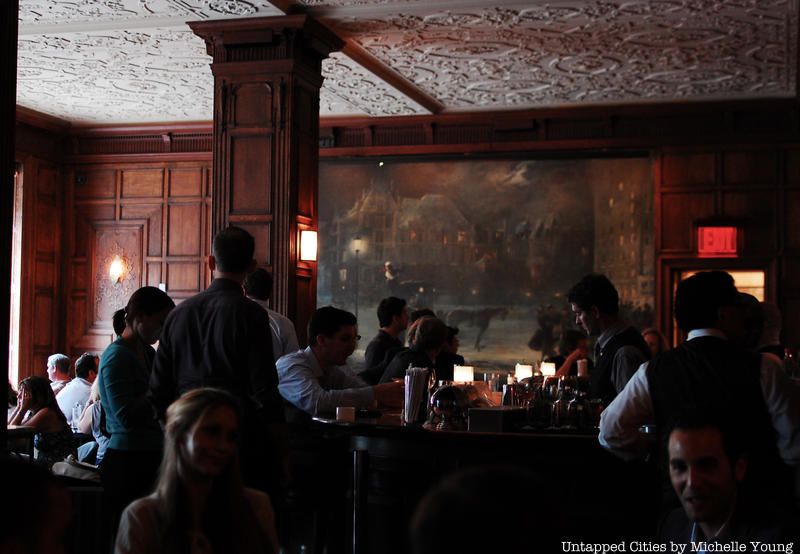
When Alfred Hitchcock‘s latest film at the time, a spy thriller called North by Northwest, was in production, Hollywood directors, actors, and production staff had little reason to leave California. Principal photography that took place entirely on pre-built soundstages was the norm. The filming of North By Northwest was one of the first in which the entire production staff shot on-location. A bevy of other films would later shoot at the Plaza Hotel, including The Way We Were, Funny Girl, Crocodile Dundee, and Home Alone II: Lost in New York.
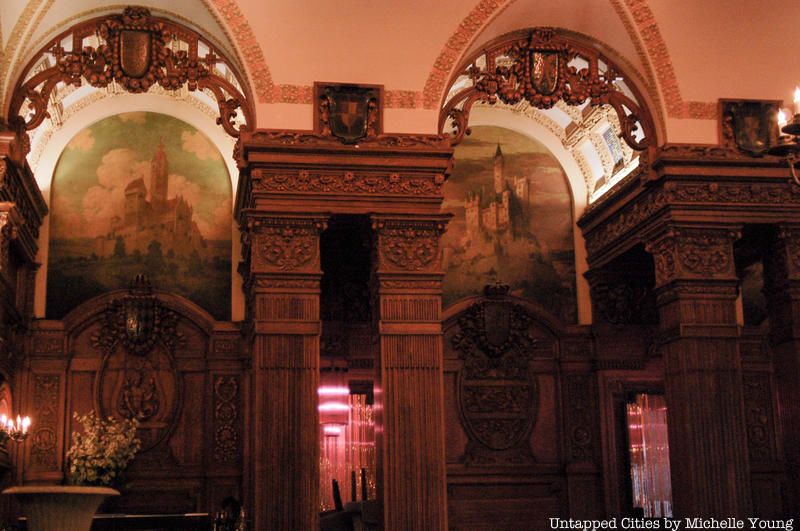
Newspapers at the time called it the Midair Murder. When the Plaza Hotel was being constructed in July of 1906, a union disagreement led to watchman Michael Butler being hit over the head. He fell three stories from the eighth to the fifth floor to his death. Other workers, witnessing his fall, simply returned to work, leaving his body on the scaffolding for some time after. Journalists at this especially sensational time in American media history had a frenzy, and wrote constantly on the case, up until the exoneration of four workers implicated in the murder. The New York Times, reporting on the trial, chose “MURDERERS EXONERATED” for their headline.
Next, read about the Plaza Hotel Oak Room’s last drink in 2011. Get in touch with the author @jinwoochong.
Subscribe to our newsletter